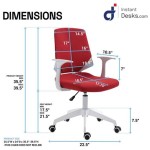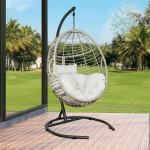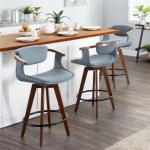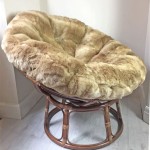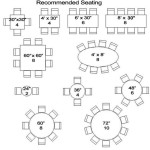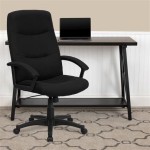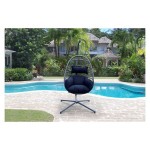The Practical and Aesthetic Considerations of a Dining Table With 12 Chairs
A dining table with 12 chairs represents a significant investment in both functionality and style for a home or commercial space. It is a piece of furniture that caters to large gatherings, extended families, or businesses requiring ample seating for meetings or collaborative work. Choosing the right dining table and chairs involves considering various factors, including dimensions, materials, design, and spatial constraints. The decision-making process necessitates a careful assessment of needs and preferences to ensure the chosen set effectively serves its intended purpose while complementing the surrounding environment.
The selection of a dining table with accompanying chairs goes beyond simply providing a place to eat. It contributes significantly to the overall ambiance of a room. A well-chosen set can become a focal point, enhancing the aesthetic appeal and creating a welcoming atmosphere. Conversely, a poorly chosen set can disrupt the harmony of a space and detract from its intended design. Therefore, careful consideration of the design elements is paramount.
Understanding Dimensional Requirements and Spatial Planning
One of the first, and most crucial, steps in selecting a dining table with 12 chairs is accurately assessing the available space. A table designed to accommodate twelve individuals inherently demands a substantial footprint. Failing to account for adequate clearance around the table can result in a cramped and uncomfortable dining experience, hindering movement and potentially leading to collisions with surrounding furniture or walls.
As a general guideline, a minimum of 36 inches of clearance should be maintained between the edge of the table and any wall or other furniture. This allows individuals to comfortably pull out their chairs and move around the table without obstruction. For optimal comfort, a clearance of 48 inches or more is preferable. Calculating the total space required involves adding the table dimensions to the clearance requirements on all sides.
The shape of the table also plays a critical role in spatial planning. Rectangular tables are the most common choice for accommodating a large number of people, but they can be less space-efficient in smaller rooms. Oval tables offer a slightly softer aesthetic and can be easier to navigate around, while round tables, although less conducive to seating twelve comfortably, can foster a greater sense of intimacy and conversation. A square table designed to seat twelve would likely require an impractical amount of space.
Beyond the table itself, the size and shape of the chairs must be considered. Chairs with arms will require more space than armless chairs. The height of the chairs should also be proportional to the table height, ensuring comfortable seating posture. Consider the possibility of storing extra chairs when not in use; folding chairs or stackable chairs can be a practical solution for maximizing space efficiency.
Careful measurement of the room and consideration of traffic flow are essential to avoid creating a congested or awkward dining area. Visual aids, such as measuring tape and painter's tape to outline the table's dimensions on the floor, can be beneficial in visualizing the space and identifying potential challenges before making a purchase.
Material Selection and Durability Considerations
The choice of materials for a dining table and chairs significantly impacts its durability, maintenance requirements, and overall aesthetic. Different materials offer varying levels of resistance to scratches, stains, and other forms of wear and tear. The intended use of the table, the frequency of use, and the lifestyle of the occupants should all be considered when selecting materials.
Solid wood is a classic and durable choice for dining tables. It offers a natural warmth and beauty that can enhance any decor. Hardwoods such as oak, maple, and cherry are particularly resistant to scratches and dents, making them suitable for high-traffic areas. Softwoods, such as pine, are more susceptible to damage but offer a more rustic aesthetic. Wood tables require regular cleaning and occasional polishing to maintain their finish.
Veneer tables offer a more affordable alternative to solid wood. Veneer consists of a thin layer of wood adhered to a core of particleboard or MDF. While veneer tables can mimic the appearance of solid wood, they are generally less durable and more susceptible to damage from moisture and impact. The quality of the veneer and the underlying core material determine the overall durability of the table.
Glass-top dining tables offer a sleek and modern aesthetic. They are easy to clean and resistant to stains, but they can be prone to scratches and chipping. Tempered glass is a safer option than regular glass, as it shatters into small, blunt pieces rather than sharp shards. The base of a glass-top table can be made from various materials, such as metal, wood, or acrylic, providing opportunities for diverse design styles.
Metal dining tables offer a durable and contemporary aesthetic. They are resistant to scratches and stains and can withstand heavy use. Metal tables are often used in commercial settings, such as restaurants and cafes, due to their durability and ease of maintenance. The type of metal used, such as stainless steel or wrought iron, will influence the table's overall appearance and weight.
For chairs, the materials used for the frame, seat, and backrest should all be considered. Wood frames offer a classic and durable option, while metal frames provide a more modern aesthetic. Seat materials can range from wood to upholstery to plastic. Upholstered chairs offer greater comfort but require more maintenance to prevent stains and wear. Plastic chairs are easy to clean and resistant to moisture, making them suitable for outdoor use or families with young children.
Design Cohesion and Aesthetic Harmony
Selecting a dining table and chairs that complement the existing décor is crucial for creating a cohesive and aesthetically pleasing space. The design style of the table and chairs should align with the overall style of the room, whether it be traditional, modern, contemporary, rustic, or eclectic. Mixing styles can be done effectively, but it requires a careful understanding of design principles and a keen eye for detail.
The color palette of the dining table and chairs should also harmonize with the surrounding environment. Neutral colors, such as white, beige, gray, and brown, are versatile and can easily blend with various decor styles. Bold colors can add a pop of personality to a room, but they should be used sparingly and with careful consideration. The color of the chairs can either match the table or provide a contrasting accent.
The shape and lines of the table and chairs should also be considered. A rectangular table with clean, straight lines will complement a modern or minimalist decor, while a round table with curved lines will suit a more traditional or transitional style. The chairs should be proportional to the table in size and scale. Overly large chairs can overwhelm a small table, while undersized chairs can look out of place with a large table.
Details such as the table's finish, the chair's upholstery, and any decorative elements can further enhance the overall aesthetic. A glossy finish will create a more formal and elegant look, while a matte finish will provide a more casual and relaxed feel. Upholstery patterns can add visual interest to the chairs, but they should be chosen carefully to avoid clashing with other patterns in the room.
The lighting in the dining area can also influence the perceived aesthetic of the table and chairs. A well-lit table will showcase its features and create a welcoming atmosphere. Pendant lights, chandeliers, and table lamps can all be used to enhance the lighting in the dining area. The style of the lighting fixtures should complement the overall design of the room.
Ultimately, the goal is to create a dining area that is both functional and aesthetically pleasing. The dining table and chairs should not only provide a comfortable place to eat but also enhance the overall ambiance of the room. By carefully considering the dimensions, materials, design, and surrounding environment, it is possible to choose a dining table with 12 chairs that meets all needs and exceeds expectations.

Rustic Dining Table With 12 Chairs In Tucson Homestyle Galleries Furniture Store

Large Farmhouse Table Long Kitchen Rustic Dining 12 Foot 13 14 All Sizes Stains Etsy

Harold Triple Pedestal Extra Large Dining Table For 12 People

Carnegy Avenue Natural 9 Ft X 40 In Folding Farmhouse Dining Table With 12 Cross Back Chairs Rectangular And Set Cga Xf 225877 An Hd The Home

Antique 12ft Victorian Ref No 04219a Regent Antiques

Dining Table With 12 Chairs Modern Buffet Mirror Lds 112a

Dallas Ranch Solid Wood Square Dining Room Table Set For 12 8 4

Rustic Farm Table 10 Ft Or 12 Foot Set W You Pick Chairs House Country Cabin Distressed Large Kitchen Dining Custom Sizes Colors Etsy

I Need This Square 12 Person Table

Paris 12 Person Dining Room Set Istanbul Furniture Home Of Unique Turkish
